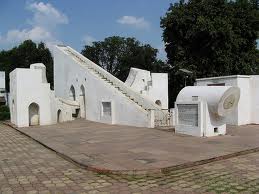Hinduism as a faith and way of life. It is many sided, bound by a common search for truth and has a large pantheon of gods and goddesses. Hinduism grew by a process of acceptance and assimilation. Hinduism is a mono-theistic religion, believing in the Supreme Being from whom emanates everything. The va
pantheon of gods and goddesses. Hinduism grew by a process of acceptance and assimilation. Hinduism is a mono-theistic religion, believing in the Supreme Being from whom emanates everything. The various manifestations of this Being are worshipped in visible forms to enable people to concentrate on the abstract Being. Swami Vivekanand also laid emphasis on the fact that for the purpose of concentration and worship the presence of a physical form is an absolute necessity.
On the 14th day of the dark half of Magh the great night of Shiva is celebrated. On this day the devotees of Shiva observe fast. Once a hunter set out for a hunt. He came near a pond, and for the purpose of hunting he climbed a "bel" tree (sacred to Shiva). Sitting on a branch he waited for game. But since the leaves obstructed his vision, he began to pluck a few leaves, which by chance fell on a Shiva Linga ("pindi"), which happened to be under that tree. Then a herd of deer came to drink water. The hunter took aim at a hind (female deer). But as she noticed the movement of the hunter, she cried out, "Please, wait a moment, before you shoot let me go home and meet my young ones for the last time. Afterwards you may take my life at your pleasure."
pantheon of gods and goddesses. Hinduism grew by a process of acceptance and assimilation. Hinduism is a mono-theistic religion, believing in the Supreme Being from whom emanates everything. The various manifestations of this Being are worshipped in visible forms to enable people to concentrate on the abstract Being. Swami Vivekanand also laid emphasis on the fact that for the purpose of concentration and worship the presence of a physical form is an absolute necessity.
On the 14th day of the dark half of Magh the great night of Shiva is celebrated. On this day the devotees of Shiva observe fast. Once a hunter set out for a hunt. He came near a pond, and for the purpose of hunting he climbed a "bel" tree (sacred to Shiva). Sitting on a branch he waited for game. But since the leaves obstructed his vision, he began to pluck a few leaves, which by chance fell on a Shiva Linga ("pindi"), which happened to be under that tree. Then a herd of deer came to drink water. The hunter took aim at a hind (female deer). But as she noticed the movement of the hunter, she cried out, "Please, wait a moment, before you shoot let me go home and meet my young ones for the last time. Afterwards you may take my life at your pleasure."









